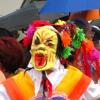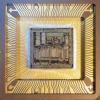Search the Community
Showing results for 'STM32F4'.
-
The availability is not so good as for the smaller STM32F4-DISCOVERY kit. See http://www.findchips.com And I don't want to be responsible for a sellout of the last available boards ;-) Best Regards, Thorsten.
-
Hallo Thorsten Erst einmal vielen Danke für die guten Infos. Ist wirklich interessant was sich in Bezug auf die STM32 MCUs dieses Jahr so getan hat. Das sah letztes Jahr bei meinen ersten Gehversuchen mit dem STM32F4 Discovery Board noch etwas mager aus. Wenn ich mein Synth Project in den nächsten Wochen abgeschlossen habe, plane ich eine verbesserte 2.Version. Das Kind hat auch schon einen Namen.. "WAVE 2". Vielleicht mit einem STM32. Schaun wir mal .. :smile: Übrigens bin ich gerade dabei, die Loop-Funktion für die Wavesamples in meinem Synth zu programmieren. Gute Ideen und Anregung für die Umsetzung verschaffe ich mir aus dem Bedienungshandbuch des PPG Waveterm A und einigen Demos auf Youtube. PPG WAVETERM A 2.2 Schon geil die Sounds :smile: Die Loopfunktion funktionier bei mir ähnlich. Nur mit dem einzigen Unterschied das ich statt 64KByte ganze 1Mbyte Samplespeicher habe, dazu noch 2x VCF's (OTA13700) und 2x VCA's (OTA13700). Gruß Rolf
-
Hallo Rolf, wenn Du bereits ein STM32F4DISCOVERY Board hast, koenntest Du bspw. mit diesem Tutorial direkt loslegen, einen Synthesizer zu programmieren: http://svnmios.midibox.org/listing.php?repname=svn.mios32&path=%2Ftrunk%2Fapps%2Ftutorials%2F024_i2s_synth%2F MIOS32 bietet ja schon alles was man dafuer braucht. Vor allem die I2S und MIDI (USB und UART basierend), scannen von Buttons, Encodern, LEDs, verschiedene LCD typen (character oder graphisch), SD Card, usw. usw. Die Toolchain basiert auf gcc mit nanolib: http://www.midibox.org/mios32_toolchain/ Und zum Aufladen von Code, sowie zum Debuggen via printf verwendet man MIOS Studio: http://www.ucapps.de/mios_studio.html Alternativ koennte man auch mit Eclipse debuggen (falls Du eine IDE suchst, mit der man bspw. Breakpoints setzen kann, waehrend der Laufzeit Variablen abrufen kann, usw) - irgendwo gab es mal ein Thread zu diesem Thema. Welche Peripherals bietet die Atmel MCU, die nicht im STM32F4 enthalten sind? (wenn man mal vom Audio DAC absieht, doch ein externer DAC ist u.U sogar vorteilhaft, weil man die Spannungsversorgung besser gegen Stoerungen aus der digitalen Spannungsdomaene isolieren kann) Gruss, Thorsten.
-
Hallo Thorsten Interessehalber hatte ich mir vor einigen Monaten das sehr preiswerte STM32F4DISCOVERY Evaluation Board gekauft und ein wenig damit experimentiert (siehe Link unten) Leider sind die wirklich guten Entwicklungstools dafür etwas teuer. Ich programmiere gerne mit ATMEL Studio. Es hat viele Vorteile wzB leichte Bedienung, keine Codegrößenbeschränkung und ist Freeware. Es ist mir schon bewusst, das die ATMEL MCU's nicht zu den schnellsten ihrer Gattung zählen. Aber Geschwindigkeit ist halt nicht alles was zählt. Die ATMEL MCU's haben ihren Vorteil in der Menge der angebotenen internen Peripherie und sowie einen großen Funktionsumfang. Im Vergleich dazu sieht so ein schneller STM32F4 etwas alt aus. Link: Meine ersten Erfahrungen mit dem STM32F4DISCOVERY Evaluation Board Gruß Rolf
-
Last saturday I checked a Quad-IIC board with the new compiler on a STM32F1, STM32F4 and LPC17 - still works. What happens at your side if only the second, third or fourth uC is stuffed, and all other PICs are removed? Btw.: the fastest way to check the availability of the IIC slaves is to enter the "system" command in MIOS Terminal. Best Regards, Thorsten.
-
Thanks for your feedback, ilmenator! It is good to know, that it should work, maybe it is because of my adaptations to get the VFDs running which required some (probably improperly done :)) driver hacking or the long SRIO chains I am using, or the old compiler toolchain i am using (did not manage to update yet, am compiling on FreeBSD, which complicates things :))... But no worries for now - will wait for the new core and then update everything properly :-). Am really looking forward to the STM32F4, awesome specs, cheap price :) Many greets, Peter
-
Hola Altitude! Thanks for your answer - yes, the bootloader is up to date. It is really not important, please don´t pull your hair :) - will upgrade to the new STM32F4 based core and check IIC MIDI again, when it is available - 192KB of RAM will allow for more SEQ goodness, maybe even 1024 step patterns as a Christmas present? :-) Many greets! Peter
-
For 16 EUR you can get a nice presoldered Audio DAC + STM32F4 ;-) http://uk.rs-online.com/web/p/processor-microcontroller-development-kits/7458434/?searchTerm=stm32f4discovery&relevancy-data=636F3D3226696E3D4931384E4B6E6F776E41734D504E266C753D656E266D6D3D6D61746368616C6C7061727469616C26706D3D5E5B5C772D5C2E2F252C5D2B2426706F3D313326736E3D592673743D4D414E5F504152545F4E554D424552267573743D73746D33326634646973636F766572792677633D424F544826 See also http://www.ucapps.de/mbhp_core_stm32f4.html Best Regards, Thorsten.
-
Hi Duggle. Thanks for your advice. i just had a look at the discovery boards from STM. I think I may go down the STM32F4 Discovery board route, as at the moment for me. learning to program for emebedded electronics is my present objective. rather than building. I think that one of the discovery boards has a couple of buttons, a potentiometer and a LCD display built in, plus an area that has a number of GPIO pins to hook up other electronic components on a bread board. Probably all i need to start. And if I enjoy the programming, then I may take it to the next level and design and build the hardware. For learning programming for the STM discovery ARM boards, the IAR kick starter pack looks the best although fairly expensive.
-
Hey, I was wondering, if, before getting involved in the hardware design and development stage of creating my midibox project. Perhaps it would be an idea for me to simply buy a prototype board that will work off the shelf with MIOS which I can use to experiment programming up code to use to control my DAW such a Logic etc. I know there are loads of prototype development boards on the market, some with basic electric components built in that can be used as the basis for testing out code. Can anyone recommend a prototyping / developmental board that is compatible with MIOS, which can be set up easily to connect with PC/MAC to interface with Logic Pro and that has electronic components built in such as buttons, led's, rotary encoders, an LCD Screen and even a fader? Alternatively I guess i could buy something like the STM32F4 discovery development board and buy some electronic components to use with the board built in header pins and use a bread board with the components i mentioned. Cheers Justin
-
Rightly or wrongly the MIDIbox platform has always had a very strong DIY ethos. This means that although kits are available, they still need to be assembled by someone. MIOS compatible hardware is pretty much limited to the published designs. Although it's very new, the STM32F4 Discovery board is probably the closest thing yet to pre-built MIOS32 board, although it lacks interfaces one would probably want such as UART MIDI ports etc. If you can bring yourself to solder an LPC17 core board you'll have a platform that is ready to go with a whole range of project options (most will require some additional I/O, again easily assembled from kits).
-
Is this info that you posted on the new STM32F4 page still true? I was under the impression that one DAC was freed up and all the pins for a high-speed SDIO SD card were now enabled? Or am I totally confused?
-
V1.013 is available under http://www.ucapps.de/mios32_download.html fixes the "single_usb" display problem as reported by Duggle above fixes a potential race condition between the core and MIOS Studio for devices with slow flash sector erase times (however, I only noticed this problem on a STM32F4 device yet) support for STM32F4DISCOVERY and the upcoming MBHP_CORE_STM32F4 :smile: -> http://www.ucapps.de/mbhp_core_stm32f4.html Best Regards, Thorsten.
-
Some news from STM32F4: I started with the schematic and assigned the pins. The upcoming breakout board (layouted by SmashTV) will provide sockets for: - USB (via the on-board Micro-Socket) - 4 MIDI INs and 4 MIDI OUTs (note: the MIDI IOs will require a separate PCB, more about this topic later...) - 3 SPIs, each one with 2 CS lines. Two SPIs at 5V, one at 3.3V (for SD Card) - 8 analog inputs - 2 LCD ports - 2 IIC - 1 CAN - 8 IOs (J10) - (on-board) Stereo Audio DAC Note: some of the current pin assignments will be changed based on the new schematic in the next days. Everybody who already built the HW has to adapt some connections (e.g. for the SD Card) accordingly. I will publish the schematic once I tested all connections, and once I'm sure that they are final. Best Regards, Thorsten.
-
Hi all, I found this forum last night while searching for information on usb-midi for an stm32F4-Discovery board, it appears that someone awesome (TK I think?) has started a port to the stm32F4-discovery boards :-) I understand that midibox isn't really just one thing, it appears to be a collection of things from synths and sequencers to controllers and manglers, I've just built myself a simple midi controller using an arduino mega1280 that's using serial and a serial to midi bridge, however, I have some teensy 2.0 boards on their way which will give me straight usb-midi, this will be entirely adequate for some smaller controllers that I want to build but midibox seems like an interesting path to wander down too :-) I'd like to build a better controller with the stm32F4-Discovery board if that's possible, I mainly want to be able to design a sensible controller with the usual controls, buttons, sliders, pots, rotary encoders, I appreciate that at this time the stm32F4-disco support is limited to digital only so the pots/sliders will have to wait for analog support to be written. I would also like to be able to manipulate the messages to a tempo when I hit certain buttons,so essentially providing midi controller based effects. For instance, I might want to press a controller button and have it repeat every 8th note etc. Bearing all that in mind, can any of you knowledgeable people suggest where I might start? Reggie.
-
Hi John, thanks for the reply, that's not what I was hoping to hear. Especially considering the 100 exposed pins on the stm32F4-Discovery board. Whilst I appreciate that not all of those pins will be available (there are 10 or so that are for 3/5v, vdd and ground) I had expected there to be access to quite a few of them. To start off with I just need be able to use it as a general controller sending midi via usb, it feels like complete overkill right now to start mashing other ICs together when the disco board has everything onboard already. Then again, just using it as a controller with a ton of buttons seems underkill :D It's a shame as I'd hoped the modules were software style plugins, setup the number of pins, which pins you want to use, add functions to go with them and away you go. Reggie.
-
John E Finster is right - just get and assemble a LPC17 module and one DINx4 module and read these fantastic tutorials: http://ucapps.de/mios32_c.html (#10 would be of interest). Then you can build about everything. Don´t rely on the STM32F4 support just yet. If you are interested in a finished project that allows to be used as a MIDI controller, head to the MIDIbox NG section on ucapps.de - it is a very powerful unit that allows for a lot more and implements a scripting language to control it. Many greets, Peter
-
Hi Reggie, I didn´t follow the developement of the stm32f4 discovery closely, but I don´t think it is quite ready yet to be integrated into the midibox hardware platform and probably won´t be until some time next year. So If you want to start now and don´t want to wait a year, you could focus on the current LPC17 core. As far as I see it, every idea you have about your controller can be easily realised by the available technology right now. I suggest you have a look into the MB_NG firmware here, which is the most flexibel and powerful one right now. Also have a look at all the available hardware modules. I think you misunderstood the concept behind them. First you need a core module (like the LPC17) that is able to run the MIOS32 system and the firmware you like. If you want to use hardware elements like buttons/encoders/leds/.... you have to connect all that to the core via another hardware module, the core itself doesn´t provide (many) pins for direct connections and neither will the new stm32f4 core. So you need additional modules for your control surface elements: encoders, buttons ----> DIN module faders, pots ----> AIN or AINSER module motorfader ----> MF_NG module leds ----> DOUT module etc........ Have fun! my regards
-
Thanks Hawkeye, I had a look at a lot of projects and they seem to contain a lot of dead links :-( As you can appreciate, midibox is no small thing, I don't really fully understand all of the concepts yet, perhaps I need to start with that? I understand that I need a core, which would be my stm32F4-discovery board. I also see that there are other modules such as AIN etc. which seem to be units (another mcu?) that are attached to the core? Which is where my understanding breaks down, with the stm32F4 board, I can't see me actually needing any extra add-on modules, the board should cope with everything already in it's own right, is that possible? To start with I really just need to be able to use digital pins connected to buttons/rotary encoders to send note on/off and cc data via USB, perhaps something like 16-20 buttons, 8 encoders. I'd like to be able to offline edit the button/encoder messages, in the future I'd like to add multiple messages per button (which shouldn't be difficult at all). If I have to add external modules I have various atmega chips that that can send midi data over serial if necessary. Is it worth trying to message TK at all, to see what the state of play is with his code or whether he can give me any pointers as he ultimately knows more than anyone on the subject?
-
Hey there and welcome :) Best way to start - go to ucapps.de and choose a project you like. Most of them are based on the LPC1769 (not the STM32F4) uC though, but that is also a fine controller. Whenever you´ve found a project, there is plenty of documentation on ucapps.de and helpful people here in this forum :-) Enjoy and have a great time! Peter
-
I use the ARM toolchain from Arch Linux's user repository (currently GCC 4.8.1). I can do testing of compiles but I don't have a free MBHP_Core or other hardware. I've got a Discovery board though, obviously. In (somewhat) related news, me and a friend succesfully read from an SD card on his home-made STM32F4-based board. In 4bit mode with DMA we got just under 10MByte per second...
-
Hi Adam, there were almost no changes since 2012. All features that you can see on the Lemur snapshots are available, but the project itself still requires a lot of work for the control surface (not defined yet) and the documentation. Last but not least I would have to find some time to continue with this... ;) If somebody wants to help out: step forward! :) The SCS based menu interface is different to MBCV1, it's more like on MIDIO128 and MBNG (e.g. requires 2x20 LCD, rotary encoder and 6 buttons) It doesn't allow to change all parameters - this is currently only possible with the Lemur UI. The application has been designed for LPC17 (and faster CPUs, I guess that it will run on a STM32F4 as well) The STM32 hasn't enough "horsepower" for handling the high-speed modulation pathes, and will probably stall. Best Regards, Thorsten.
-
This could be related to a different problem - I haven't tested the STM32F4 based bootloader on a Windows PC yet; only MacOS Best Regards, Thorsten.
-
hello, I bought a new board(still STM32F4) and the problem was fixed. I think it is a HW problem. I don't know for you esher
-
I just flashed the .bin that TK posted using the st-flash utility from the stlink package, and then uploaded the firmware with MIOS studio as normal. This is all on Linux. I don't use any IDEs so I don't know how it's done, but with st-flash it's just $ st-flash write project.bin 0x08000000 (where 0x08000000 is the memory offset where the internal flash starts, as per the STM32F4 datasheet) After that, I reboot the board and it shows up as a MIDI device (make sure you connect both USB ports to your computer).







